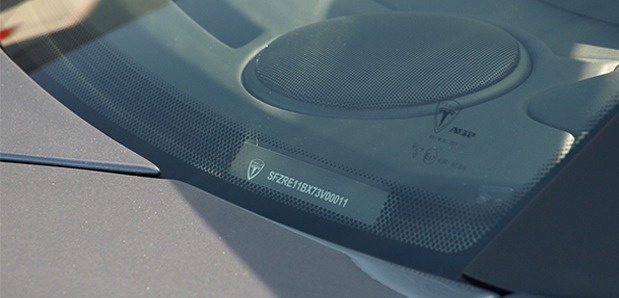
The VIN number on your Tesla should be permanently affixed to the chassis or body on the right side of the vehicle in a prominent position. Vehicle identification is one of the first actions performed during vehicle diagnostic tests and is an important part of them.
In Tesla vehicles, it is located in different places, depending on the car model (e.g. Model 3, Model S, Model X, Roadster). In older cars, it was located on the vehicle’s data plate or was “stamped” or embossed on the frame or body of the vehicle. In newer vehicles, the number is often visible in the form of a sticker behind the windscreen. If you are not able to locate the number, it is worth driving to a garage and ask the diagnostician for help. However, the easiest way is to use our tool, which is available on the home page. Of course, if we’re looking for a new car, many advertisers include such number in the car sale ad and already allow us to check it.
Check where the VIN is in Tesla – enter the body number
It’s worth deciphering the VIN before you buy the vehicle to make sure you’re actually paying for what you’re buying. Unfortunately, it may turn out that the new equipment adversely affects the vehicle and frequent visits to the showroom will be necessary. By checking the VIN, we are also able to determine whether the vehicle has accidentally entered the country illegally. This is unfortunately an increasingly frequent problem.
VIN number what is it?
The VIN, or Vehicle Indentification Number, is a unique vehicle identification number that contains numerous and important pieces of information about a car. The VIN contains information such as country of manufacture, model year, drive type, engine version, equipment options, among others.
VIN numbers were first used in 1954 in the United States. Car manufacturers such as Tesla were already marking their cars in this way. Marking of this type began to be used by manufacturers in Europe. However, the first numbers looked very different. It was not until the 1980s (in 1981 to be precise) that the world’s manufacturers, together with US manufacturers, finally agreed on this issue.
In 1981, the National Highway Traffic Safety Administration in the United States standardised the format. Cars sold should contain a 17-character VIN that does not contain the letters I (I), O (o) or P (q) (to avoid confusion with the numbers 1 and 0).
A common standard has therefore been developed to facilitate the work of the police, insurance companies and used car dealers. From now on, the VIN of every car has 17 characters – letters and numbers.
If you have already found the VIN number, be sure to check it. This will help you find out all the information about the model in question. Thanks to the VIN you will know, among other things, the history of the vehicle, the type of equipment, the colour and its origin. All the information contained in this number will allow you to make the right decision when buying a car.


 EN
EN  PL
PL  RU
RU  DE
DE  HU
HU  EE
EE  LV
LV  RO
RO  SI
SI  CZ
CZ  LT
LT 